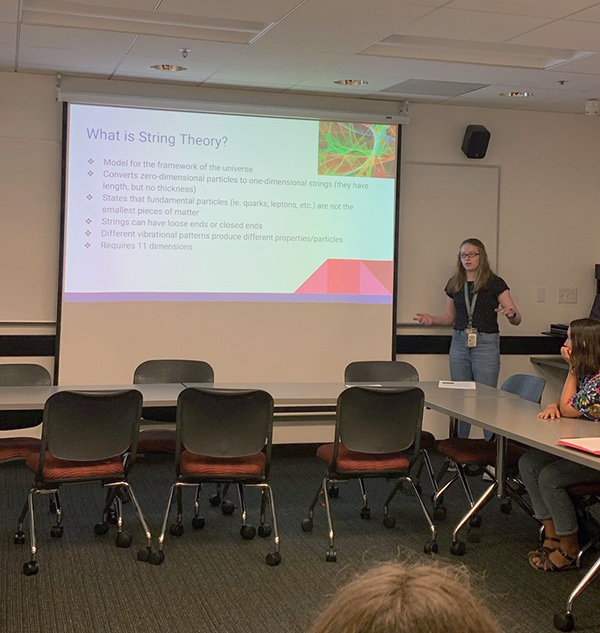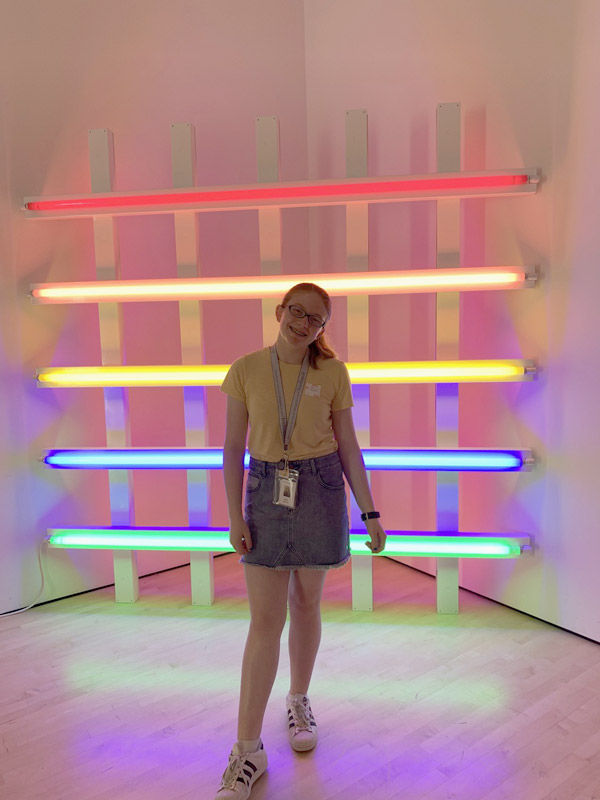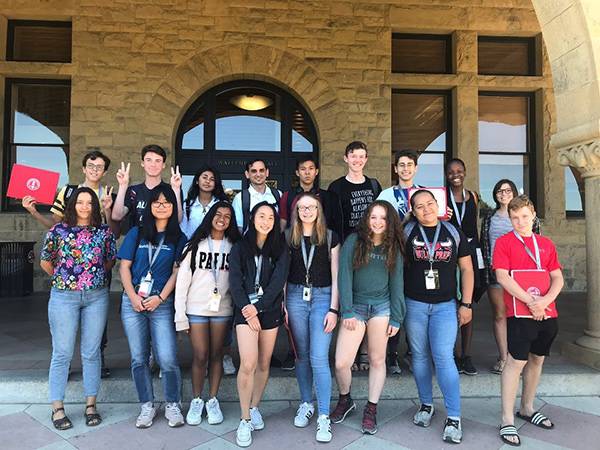by Maya Benyas
This summer, I attended the Stanford Pre-Collegiate Summer Institutes, a three-week program, to study the foundations of modern physics in the course, “The Frontiers of Physics.” The course focused on areas of physics such as special and general relativity, quantum mechanics and particle physics.
In the Classroom
Lectures during the morning session covered different topics each week; during the first week, we studied the Theory of Relativity and related concepts. On the first day, class began with a review of trigonometric functions, which are key to understanding classical mechanics, the basis of Newtonian physics. We soon dove into “modern physics,” beginning with Einstein’s Theory of Special Relativity in 1905. Among the concepts we studied was time dilation, which dictates that time is non-invariant and changes depending on your frame of reference. Similarly, length contraction is the idea that length can be shortened depending on your reference frame. We also discussed Lorentz transformations and Minkowski diagrams, which are visual representations of time and position. Every day, we received problem sets based on the topics we had covered that day during the lecture. Additionally, each week we were assigned a larger project to work on, due at the end of the week. Our first-week project was a paper on time dilation, which was to include an abstract, introduction, methods and conclusion.
The second week transitioned into quantum mechanics. We delved into wave-particle duality in particular, studying the double slit interference experiment. The lab involves a phenomenon that occurs when a light is shined through two small slits and projected onto a wall (the viewing screen). The pattern that appears is alternating bright spots and dark spots, a product of the constructive/destructive interference that occurs between the light waves. Eventually, we performed the lab during an afternoon study session, and the project for the second week was to write a lab report for that experiment. We also learned about Compton Scattering, the resulting effect of a photon colliding with an electron. One of the challenge problems my professor assigned was to derive an equation for Compton Scattering that combines the conservation of energy and conservation of momentum principles in this special scenario.
The main focus of the third week was to prepare our final projects, writing a paper and presenting that paper to the class, which we worked on during the afternoon study sessions. After thinking long and hard about which topic to choose, I decided to write my paper and create my presentation on string theory, one of many topics that interested me.
Beyond the Classroom
The program was not all work and no play. Every day after study session there was an activity period from 4-5:30, right before dinner. Daily activities, held in locations all across my cluster, ranged from basketball, sand volleyball and movies, to rock painting, “casino night,” dance, spa day, fountain lounging and more. Activities were a great way to get to know students from other dorms, and have fun with people from your own house.
There were also several field trips. We went to Capitola Beach for the day, located in a cute little town with many shops and restaurants. We visited the San Francisco Museum of Modern Art (MOMA). It was an amazing museum, filled with so many different styles and pieces of artwork, each portraying unique qualities.
As part of my class, we took a field trip to the Stanford Linear Accelerator Center, a particle accelerator near the Stanford campus. A tour guide took us around the center; he showed us some of the rooms where experiments are performed using the accelerator, and explained a bit of the physics behind how it works.
Final Thoughts
My experience at Stanford was an unforgettable one. I will forever cherish my memories of being a part of such an amazing physics class, learning from a fantastic teacher (who was also cool because he played in a band and rode a skateboard), and meeting such intelligent, kind and unique students. Not only did I expand my knowledge of physics and increase my interest in the subject, but I also learned more about myself, living with so many other high school students who are a lot like me. I discovered that these types of students bring out a certain part of me that is generally hidden—in some sense, the more extroverted part of me. I felt at home among my friends at Stanford; our relationships were built only on three wonderful weeks, even though it seemed like I had known them for many years. In addition to the students and my class, the residential counselors were always so supportive and generous, never failing to make us feel at home.
I can guarantee that it will be impossible to forget my experience at Stanford Pre-Collegiate Summer Institutes. I cannot thank the Garwin Family Foundation enough for this outstanding opportunity to live among intellectual students and study physics, the subject I hope to study in my later education. Thank you, GFF!


















